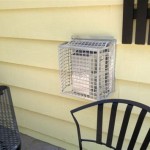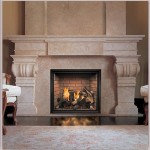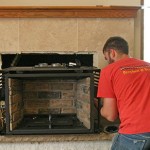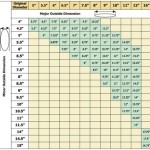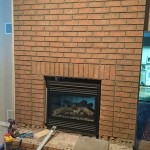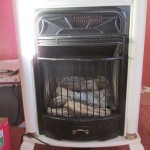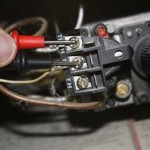Understanding Dual Gas Fireplaces: A Comprehensive Guide
Dual gas fireplaces represent a significant advancement in home heating and ambiance, offering a unique blend of efficiency, aesthetics, and control. These fireplaces are designed to operate using two different types of gas – typically natural gas and propane – providing homeowners with greater flexibility and security, especially in areas prone to natural gas outages or where propane is a more readily available option. Understanding the intricacies of a dual gas fireplace, including its mechanisms, benefits, and installation requirements, is crucial for anyone considering this appliance for their home.
The core principle behind a dual gas fireplace lies in its specialized burner system and valve assembly. This system is engineered to handle the different combustion properties of both natural gas and propane. Natural gas, primarily methane, has a lower energy density compared to propane. Therefore, a different air-to-fuel ratio and gas pressure are required for efficient and clean burning. The dual gas fireplace employs a sophisticated valve system that can be configured to regulate the gas flow, accounting for the specific characteristics of the fuel being used. This ensures that the fireplace operates safely and efficiently, regardless of the gas source.
A key component of a dual gas fireplace is the gas conversion kit. This kit contains the necessary components, such as orifices and regulators, required to switch between natural gas and propane. The orifices are small nozzles that control the amount of gas flowing into the burner. Different sized orifices are needed for each gas type because of their varying energy densities. The regulator ensures that the gas pressure is maintained at the appropriate level for optimal combustion. The conversion process typically involves replacing the existing orifices with the appropriate ones for the new fuel and adjusting the regulator to the correct pressure setting. This process should always be performed by a qualified technician to ensure safety and proper operation.
Key Point 1: Functionality and Components
The functionality of a dual gas fireplace extends beyond simply burning two different fuel types. It encompasses the ability to switch seamlessly between these fuels, often with minimal intervention. Modern dual gas fireplaces often incorporate electronic ignition systems and remote controls, allowing users to easily switch between natural gas and propane with the push of a button. The control system monitors the gas type selected and automatically adjusts the air-to-fuel ratio and gas pressure accordingly. This level of automation ensures optimal performance and safety.
The components of a dual gas fireplace are designed for durability and longevity. The firebox, typically constructed from heavy-gauge steel or cast iron, is built to withstand the high temperatures generated during combustion. The burner assembly is crafted from stainless steel or other corrosion-resistant materials to ensure long-term reliability. The venting system, which removes combustion byproducts from the home, is typically constructed from double-walled or triple-walled stainless steel pipe to provide insulation and prevent condensation. The logs, often made from ceramic or refractory materials, are designed to simulate the appearance of real wood while radiating heat effectively. These materials are chosen for their ability to withstand high temperatures and resist degradation over time.
Several different ignition systems are commonly found in dual gas fireplaces. These include standing pilot ignition, electronic ignition, and intermittent pilot ignition (IPI). A standing pilot system continuously burns a small pilot light, which ignites the main burner when gas is supplied. While simple and reliable, standing pilot systems consume a small amount of gas even when the fireplace is not in use. Electronic ignition systems use an electric spark to ignite the main burner, eliminating the need for a standing pilot light. This conserves energy and reduces gas consumption. IPI systems are a hybrid approach, where the pilot light is only lit when the fireplace is in use. When the fireplace is turned off, the pilot light is extinguished, saving energy.
The aesthetic appeal of a dual gas fireplace is often enhanced by features such as decorative fronts, glass doors, and realistic log sets. The decorative front can be customized to match the decor of the room, while the glass doors provide a clear view of the flames and help to contain heat. The log set is designed to mimic the appearance of real wood, adding to the ambiance of the fireplace. Some models also offer options such as ember beds, accent lighting, and remote controls, allowing users to customize the appearance and operation of the fireplace to their liking.
Key Point 2: Benefits and Advantages
The benefits of a dual gas fireplace are multifaceted, extending beyond mere heating functionality. One of the primary advantages is fuel flexibility. Homeowners are not solely reliant on one source of fuel, mitigating risks associated with supply disruptions or price fluctuations. In regions prone to natural gas pipeline issues, the ability to switch to propane provides a reliable backup heating option, ensuring comfort and safety during emergencies.
Energy efficiency is another significant advantage. Modern dual gas fireplaces are designed with advanced burner technologies and heat exchangers that maximize heat output while minimizing gas consumption. Variable flame height controls allow users to adjust the flame intensity to suit their heating needs, further optimizing energy efficiency. Some models are equipped with thermostats that automatically regulate the flame height to maintain a desired room temperature, providing consistent comfort and energy savings.
Convenience and ease of use are also key benefits. Dual gas fireplaces typically require minimal maintenance compared to traditional wood-burning fireplaces. There is no need to chop wood, haul logs, or clean up ashes. With the push of a button, the fireplace can be turned on or off, and the flame height can be adjusted as desired. Remote controls and smart home integration further enhance convenience, allowing users to control the fireplace from anywhere in the home or even remotely via a smartphone or tablet.
Safety is paramount in the design of dual gas fireplaces. They are equipped with safety features such as flame sensors and automatic shut-off valves that prevent gas leaks and ensure safe operation. The sealed combustion system draws air from outside the home for combustion, preventing the depletion of oxygen from the living space. The venting system is designed to safely exhaust combustion byproducts, such as carbon monoxide, outside the home. These safety features provide peace of mind and protect occupants from potential hazards.
Environmental considerations also contribute to the appeal of dual gas fireplaces. Compared to wood-burning fireplaces, gas fireplaces produce significantly fewer emissions, reducing air pollution and greenhouse gas emissions. Natural gas and propane are cleaner-burning fuels than wood, which releases particulate matter and other pollutants into the atmosphere. By choosing a dual gas fireplace, homeowners can reduce their environmental impact and contribute to cleaner air quality.
Key Point 3: Installation and Maintenance
Proper installation is crucial for the safe and efficient operation of a dual gas fireplace. Installation should always be performed by a qualified technician who is experienced in gas appliance installation. The technician will ensure that the fireplace is installed according to local building codes and manufacturer's instructions. The installation process typically involves connecting the fireplace to the gas supply, venting system, and electrical system. The technician will also perform a leak test to ensure that there are no gas leaks in the system.
Venting requirements vary depending on the type of dual gas fireplace and the location of the installation. Direct-vent fireplaces draw air from outside the home for combustion and exhaust combustion byproducts directly outside. These fireplaces can be vented horizontally through a wall or vertically through the roof. Vent-free fireplaces, also known as ventless fireplaces, do not require a venting system. They draw air from inside the home for combustion and release combustion byproducts back into the room. However, vent-free fireplaces are subject to strict regulations and are not permitted in all jurisdictions due to concerns about indoor air quality.
Regular maintenance is essential to ensure the long-term performance and safety of a dual gas fireplace. The fireplace should be inspected annually by a qualified technician to check for any signs of wear or damage. The technician will clean the burner assembly, inspect the venting system, and test the safety features. It is also important to keep the fireplace clean by regularly dusting the logs and glass doors. Avoid using abrasive cleaners or solvents, as these can damage the finish. Never store flammable materials near the fireplace.
Troubleshooting common issues can help homeowners address minor problems before they escalate. If the fireplace fails to ignite, check the gas supply and make sure the pilot light is lit (if applicable). If the flame is weak or flickering, check the gas pressure and air-to-fuel ratio. If there is a gas odor, immediately turn off the gas supply and contact a qualified technician. Never attempt to repair a gas fireplace yourself, as this can be dangerous. Always consult a qualified technician for any repairs or maintenance.
Considerations for integrating a dual gas fireplace into a smart home ecosystem are becoming increasingly relevant. Many modern dual gas fireplaces offer compatibility with smart home systems, allowing users to control the fireplace remotely via a smartphone or tablet. This integration can enhance convenience and energy efficiency, allowing users to adjust the flame height, set timers, and monitor energy consumption from anywhere in the home or even remotely. Smart home integration can also provide enhanced safety features, such as automatic shut-off in case of a gas leak or carbon monoxide detection.

Duluth Forge Dual Fuel Ventless Gas Fireplace 32 000 Btu Remote Control Antique White Finish 170107 The Home Depot

Duluth Forge Dual Fuel Ventless Fireplace 32 000 Btu Remote Control Nutmeg Finish 170164 The Home Depot

Duluth Forge Dual Fuel Ventless Gas Fireplace 26 000 Btu T Stat Control Antique White Finish Com

Duluth Forge Dual Fuel Ventless Gas Fireplace 32 000 Btu T Stat Control Auburn Cherry Finish 170124 The Home Depot

Duluth Forge Dual Fuel Ventless Gas Fireplace 26 000 Btu Remote Control Slate Gray Finish Model Dfs 300r 2gr Com

Duluth Forge Dual Fuel Ventless Gas Fireplace 26 000 Btu T Stat Control Apple Spice Finish Model Dfs 300t 3as 179208 The Home Depot

Duluth Forge Dual Fuel Ventless Gas Fireplace With Mantel 26 000 Btu Buyersdepot Com

Bluegrass Living 55 In Black Ventless Liquid Propane Gas Fireplace The Fireplaces Department At Com

Pleasant Hearth 18 Dual Fuel Wildwood Vent Free Gas Log Set 30 000 Bt

Pleasant Hearth Universal Circulating Zero Clearance 36 In Ventless Dual Fuel Fireplace Insert Phzc36c The Home Depot
Related Posts


